Environment
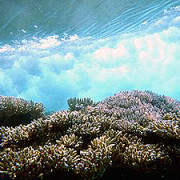 Agriculture and natural resources
Agriculture and natural resources
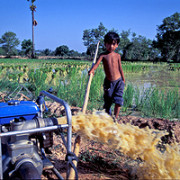 Industry and trade
Industry and trade
 Economics
Economics
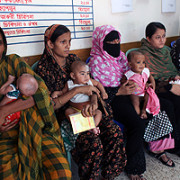 Energy, Regional cooperation and integration
Energy, Regional cooperation and integration
 Industry and trade
Industry and trade
 Energy
Energy
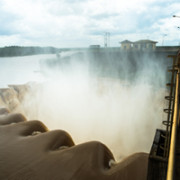 Education, Social development and protection
Education, Social development and protection
 Regional cooperation and integration
Regional cooperation and integration
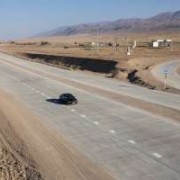 Industry and trade
Industry and trade
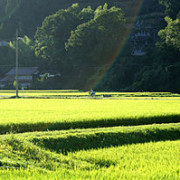
Realizing the Paris Agreement: How can Asia manage the transition to a low-carbon economy?

As the world celebrates the Paris agreement, after 20 years of fraught meetings, its significance for the future development pathways of the emerging economies of Asia cannot be underestimated. Critically, it will increase the flow of additional public and private finance for vulnerable countries for both low carbon and climate resilient investments. Low-carbon green growth pathways toward a possible 1.5°C limit and 5-year reviews will be played out through the Intended Nationally Determined Contributions (INDCs).
Reinvigorating agricultural productivity in the Lower Mekong

The green revolution has done wonders for Asia. Yields for most crops, particularly the region's main staple of rice, have doubled over recent decades. In the Lower Mekong Delta, considered to be Asia's rice bowl, the new technologies and crop strains that the green revolution brought were a big success.
What Africa can learn from Asian supply chains

At this week’s 10th World Trade Organization (WTO) Ministerial Conference in Nairobi, Kenya, trade ministers are trying to advance 15 years of Doha Development Agenda talks to reduce trade barriers. The real issue, however, is whether African economies can follow East Asia's success in global supply chains amid “new normal" growth and rising inequality.
How to achieve inclusive growth? Income inequality and health in G20 countries

The G20 leader’s summit came to a close earlier this month in Istanbul, Turkey. The emphasis of Turkey’s G20 presidency this year is on “inclusive and robust global growth.” Turkey recognizes inequality as a major problem within countries as well as across national borders and stresses the need for reducing inequality in order to achieve mutual growth. In this article, I examine the relationship between income inequality and health among G20 countries. I find that as income inequality lessens, key health outcomes, such as child mortality and life expectancy, also improve substantially. This is an important finding that could provide guidance for ADB member economies in formulating their domestic policies to foster inclusive growth.
TAPI pipeline: Inching from dreams to reality

The Turkmenistan–Afghanistan–Pakistan–India (TAPI) gas pipeline project was first conceived in October 1997 by Central Asia Gas Pipeline Limited (CentGas). Almost 18 years later, the pipeline—often dubbed as the “on/off pipeline,” the “pipeline dream,” and the “peace pipeline”—although still on the drawing board is inching closer to reality.
TPP as inspiration for the 10th WTO Ministerial Conference in Nairobi?

At the beginning of October, 12 Pacific Rim countries agreed on the Trans-Pacific Partnership (TPP) agreement. The TPP agreement has been hailed as a landmark trade pact, as it includes many issues that have so far not found their way into the rule of law in the multilateral trading system. As a reaction to the successful deal, World Trade Organization (WTO) Director-General Roberto Azevêdo announced that the TPP “will serve as an inspiration for WTO members” for the forthcoming 10th Ministerial Conference in Nairobi, Kenya. In this article, I argue that neither the process of TPP talks nor the content of the TPP agreement can provide a positive stimulus for the Doha Development Agenda (DDA) negotiations.
Energy security and sustained growth: Analysis of the energy outlook and savings potential in the EAS region

Sustained population and economic growth have almost doubled both primary and final energy demand in the East Asia Summit (EAS) region, and this rising energy demand is posing an increasing threat to energy security. Examination of potential energy saving is key to reducing energy demand and carbon dioxide (CO2) emissions, and findings can shed light on policy implications for decision making to ensure the region can enjoy economic growth without compromising energy security or causing environmental problems.
Skills and good jobs

Education and skills are important policy levers for sustainable socioeconomic growth. With the right economic fundamentals, a highly educated population with the appropriate skills is a powerful tool for economies to move from the low-income to the middle-income status, or for those already in the middle-income category to avoid the middle-income trap and move to the high-income category. Skills shortages are a pressing issue as they limit the growth of output in the short term and limit the possibility for diversification and innovation in the long term.
Mega-regional infrastructure initiatives – Asia’s new noodle bowl?

One of the striking lessons from Asia’s success over the past few decades is that it makes economic sense to invest in regional infrastructure to link two or more countries to support outward-oriented development strategies.
What next for the Trans-Pacific Partnership?

After more than 5 years of numerous missed self-imposed deadlines, trade ministers from the 12 participating Asia-Pacific countries finally concluded the Trans-Pacific Partnership (TPP) in Atlanta on 5 October 2015. The public fanfare accompanying the announcement led many to believe the agreement would soon come into force. Yet there is a lot that needs to be done before that happens, and there is no guarantee that it will. In this article, I examine two issues: (i) what concluding the TPP means in terms of what was achieved and what remains to be done; and (ii) what the TPP is likely to look like, given what we now know following the negotiations.


Search
Subscribe / Connect to Asia Pathways
Subjects
- Agriculture and natural resources
- Blog
- Capacity development
- Climate change
- Economics
- Education
- Energy
- Environment
- Finance sector development
- Gender
- Governance and public sector management
- Health
- Industry and trade
- Information and Communications Technology
- Infrastructure
- Miscellaneous
- Population
- Poverty
- Private sector development
- Regional cooperation and integration
- Sanitation
- Social development and protection
- Transport
- Uncategorized
- Urban development
- Video Blog
- Water
Recent Posts
- Artificial intelligence: A new driver for inclusive growth and development?
- Increasing trust in cross-border e-commerce and artificial intelligence
- Enhancing access to maternal and newborn healthcare in developing Asia
- Can electric vehicles lead the way to a sustainable future?
- Mitigating climate-related sovereign risk to accelerate action on the climate emergency




Recent Comments